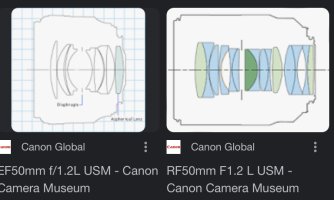A lens’ entrance pupil diameter is the apparent view of the iris diaphragm as seen from the front of the lens. The front element of a lens must be of sufficient diameter to ‘fill’ the entrance pupil with light. For telephoto lens designs, the axial position of the entrance pupil is approximately at the position of the front element. So to estimate the size of a telephoto front element, you simply divide the focal length by the maximum f/number (because f/number is the ratio of focal length to entrance pupil diameter).
Thus, a 135mm f/1 would need a 135/1 = 135mm front element. Similarly, the 600mm f/4 would need a 150mm front element. In practice, lens specs are rounded, and usually in a direction that benefits the manufacturer. So, the 600/4 is probably something like a 593mm f/4.12 lens, which is consistent with the ~144mm diameter that I actually get with a measuring tape on my 600/4L IS II.
Note that the entrance pupil being at the axial position of the front element is a telephoto design ‘feature’. Thus, for example, the front element of the 16mm f/2.8 is much larger than 5.7mm.

